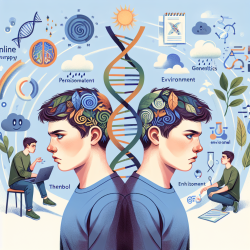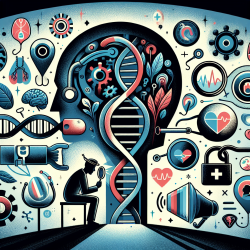Understanding Character Development in Adolescents: A Genetic and Environmental Perspective
Character development during adolescence is a complex interplay of genetic and environmental factors. Recent research, specifically the study titled "The genetic and environmental structure of the character sub-scales of the temperament and character inventory in adolescence," provides valuable insights into how these factors contribute to the development of character traits in adolescents.
Key Findings from the Research
The study utilized twin modeling analysis involving 423 monozygotic and 408 dizygotic twin pairs from the Child and Adolescent Twin Study in Sweden (CATSS). The analysis focused on three main character traits: self-directedness, cooperativeness, and self-transcendence, each comprising several sub-scales.
- Self-Directedness: The study found common environmental contributions for two sub-scales: purposefulness vs. lack of goal direction (0.14) and self-actualizing vs. bad habits (0.23).
- Cooperativeness: Three sub-scales showed common environmental influences: empathy vs. social disinterest (0.10), helpfulness vs. unhelpfulness (0.07), and compassion vs. revengefulness (0.17).
- Self-Transcendence: All three sub-scales exhibited common environmental effects ranging from 0.10 to 0.12.
Implications for Practitioners
For practitioners, especially those involved in online therapy services like TinyEYE, these findings highlight the importance of considering both genetic predispositions and environmental influences when designing interventions for adolescents. Understanding the shared environmental effects can guide the development of targeted strategies to enhance character traits such as empathy, purposefulness, and self-actualization.
Encouraging Further Research
The study underscores the need for further research into the socio-cultural factors that influence character development. Practitioners are encouraged to explore how different environmental contexts, such as family dynamics and cultural norms, impact the maturation of character traits. This knowledge can inform the creation of more effective therapeutic interventions that promote mental health and well-being in adolescents.
To read the original research paper, please follow this link: The genetic and environmental structure of the character sub-scales of the temperament and character inventory in adolescence.










